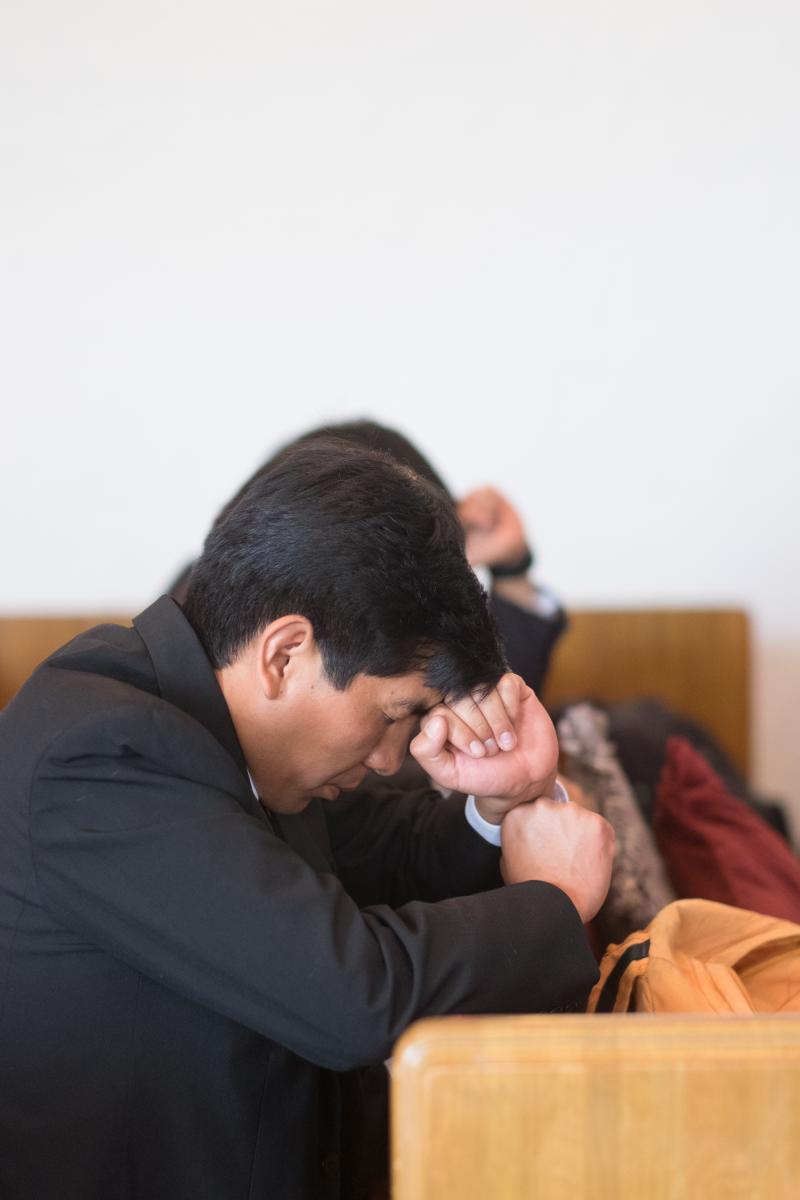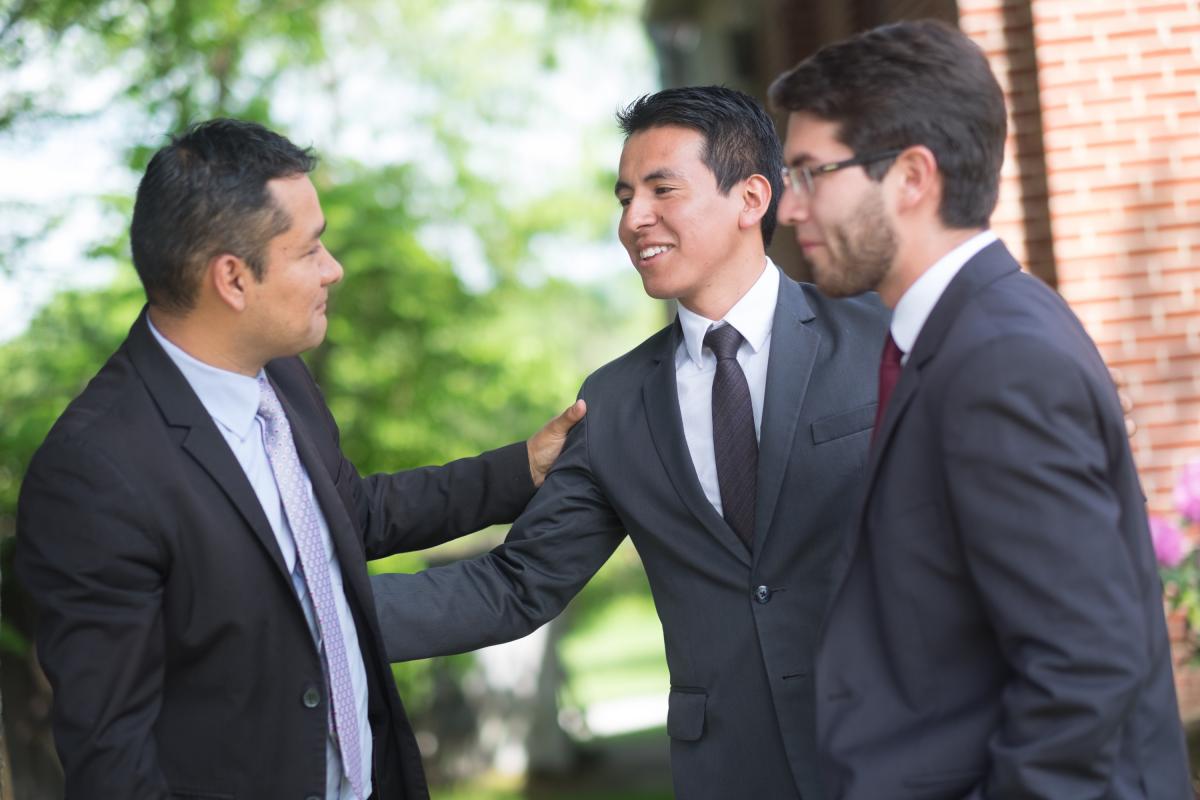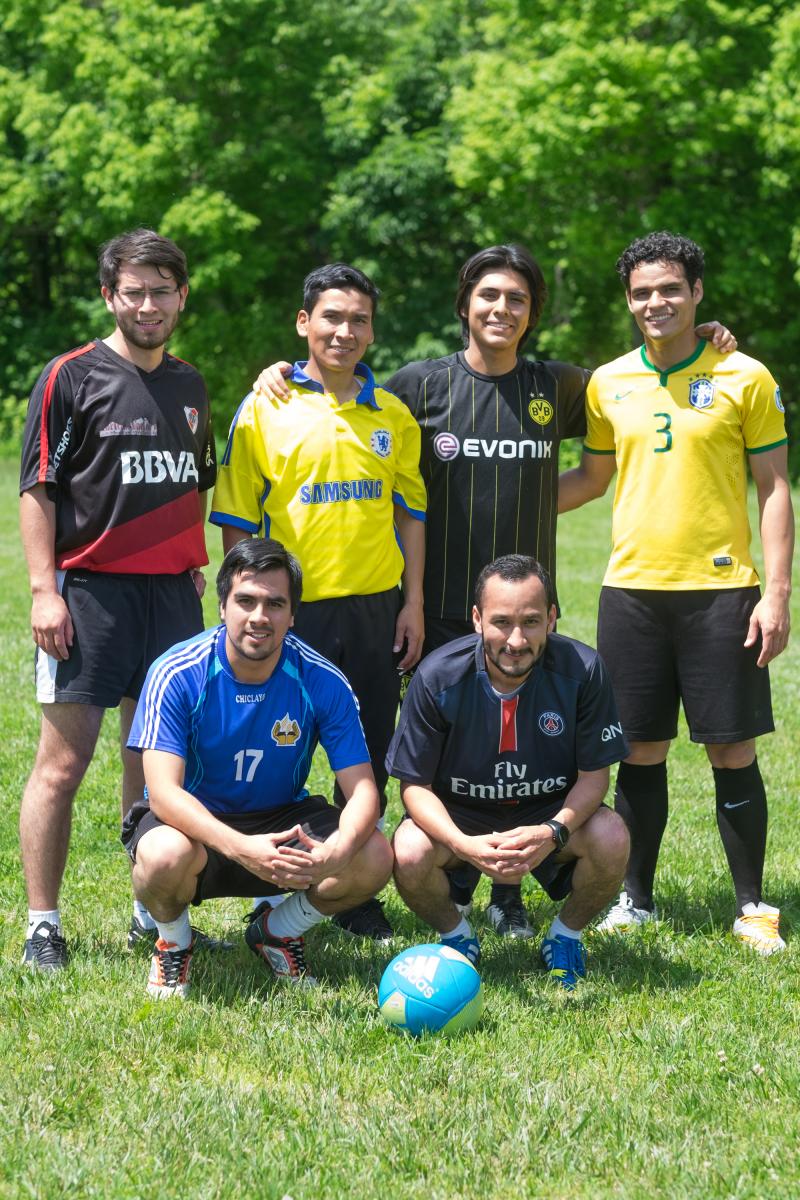
From Peru to Appalachia: A New Kind of Missionary
 Story by Edwin Manuel Garcia / Photos by Toril Lavender
Story by Edwin Manuel Garcia / Photos by Toril Lavender
An answering machine message left at the small church in Moorefield, W.Va., was incomprehensible to anyone there who tried to decipher it. Yet, nobody wanted to erase it in case someone, someday, could understand what the caller said. The message was in Spanish, not a common language in the Appalachian region at the time, some 10 years ago.
A few weeks later, a Seventh-day Adventist, bilingual man visiting Moorefield from another congregation, finally solved the mysterious message. The caller, he said, was new to the area and wanted directions to the church.
It Only Takes a Spark
That simple phone message helped spark a new ministry in the Mountain View Conference— outreach to an unexpected, rapidly growing population of Hispanic residents. It began through traditional means as lay members offered Bible studies to new immigrants. But later, when the lay members and pastors couldn’t keep up with the immigrants’ increasing demand to hear the gospel message, they knew they needed a novel solution to help with the work.
These U.S. lay members called on missionaries from South America.
Eleven theology students from Peru are now laboring in five West Virginia cities—Moorefield, Lewisburg, Morgantown, Huntington and Charleston—a mission field expected to sprout the conference’s first two Spanish companies later this year. Since their arrival in July 2015 for a yearlong rotation, they have presented hundreds of Bible studies in the five communities. They hope to complete 1,000 studies by the end of next month.
“It’s just been a wonderful experience,” says Larry Boggess, Mountain View Conference president. “Here in the Appalachian Mountains, you don’t find too many people moving in this direction, but over the past 10 years or so, we’ve had many [more] Hispanic folks.” Boggess reports that despite the fact that Mountain View is the smallest conference in the United States, with 13 pastors, 35 churches and 2,300 members in West Virginia and the western part of Maryland, they were never afraid to tackle the mounting work.
The missionaries, who receive lodging, food and transportation courtesy of local churches, and airfare and insurance from the conference, spend much of their time just getting to know the immigrants. They engage them in soccer twice a week, listen to their harrowing stories of journeys to the United States or invite them to a monthly party for a meal and socialization.
The missionary-driven, evangelism initiative has been bringing another unanticipated result: the English-language congregations have been positively influenced by the work and, according to conference leaders, have begun to also draw new members.
“Of course this is a win-win situation for everyone,” says Arturo “Art” Jeronimo, pastor of the Lewisburg church district, noting that the missionaries are enjoying a unique cultural experience, while small groups of new congregants are attending Spanish-language church services and small group meetings.
History of Hispanics in Rural America
While Spanish-speaking Adventists have been a presence on the East and West coasts for decades, and major cities in between, according to U.S. Census statistics, migration from Latin America to rural areas over the past 20 years is a fairly new pattern. This is impacted by American industries trying to fill labor shortages at blue-collar worksites.
In Moorefield in particular, immigrants mostly from Mexico, Honduras and Guatemala are attracted by a poultry processing plant. Oftentimes the male workers migrate intending to stay a few years, save money then go back home to live more comfortably with their families.
The Moorefield church, about 130 miles from Washington, D.C., was the first Mountain View congregation to encounter the area’s growing Hispanic population. Soon afterward, about three hours away in Lewisburg, Adventists also noticed an uptick in Spanish-speaking residents.

A Painful Restart
The Columbia Union took notice and in 2007 encouraged college student Walter Cardenas, who at the time was working in Alexandria, Va., to be a Bible worker in Mountain View. Cardenas, a Honduran native, and lay workers had serious momentum during their first few months of ministry, giving more than 50 Bible studies. But, their work came to a screeching halt the moment immigration authorities raided a Moorefield poultry plant and sent workers to deportation hearings.
The sad thing, says Cardenas, is that the people receiving Bible studies did not get detained, but news of the raid scared them out of town, forcing church members to seek new prospects for Bible studies.
It wasn’t easy.
“It was a very stressful time for everyone,” shares Cardenas, noting that workers who got caught up in the raid were also about to be deported and split from their families. And, the town’s economy was uncertain because the poultry plant was now short of workers. Many people suffered, he says.
Cardenas and the lay people responded by refocusing their evangelism efforts. Instead of jumping back into Bible studies, “we visited the families and asked what we can do for them,” he says. The Spanish-speaking Adventists helped secure food. They also drove the families to immigration court and served as interpreters.
Little by little, people they helped got baptized. Eventually, up to 80 immigrants attended Spanish services at the Moorefield church, first in a combined service with interpretation, and later in a Spanish-only, afternoon worship. Attendance though, would later drop to fewer than 40 due to the transient nature of the area’s Hispanic population—some moved back to Latin America, others relocated to nearby towns with an Adventist presence.
Missionaries Accept the U.S. Call
The evangelism work Cardenas started in 2007 laid the foundation for the opportunity to bring missionaries from Peru. Cardenas is now an ordained minister and oversees all of Mountain View’s Hispanic outreach.
Peruvian Union University leaders first discussed this unprecedented mission project in 2014 when Pastor Jeronimo’s wife, Ester, who is of Peruvian descent, told the university provost about the evangelism opportunities in rural West Virginia. The provost later asked Pastor Jeronimo, “Have you ever thought about taking student missionaries from Peru to the U.S. for a year of service?”
At first, Jeronimo (pictured above, on left) doubted the idea, but the more pastor friends he consulted, the more he realized the project could succeed. “Before I realized it, I was presenting the proposal to the executive meeting of the Mountain View Conference, and they approved a trip to Peru to explore this further,” he reports.
During a second trip in 2015, Mountain View leaders interviewed theology students and selected 11 to serve in the Appalachia area. The missionaries, some fluent in English, are charged with two tasks: support the local English-language congregation—volunteering in the schools, leading worship music and teaching Spanish—and work toward starting Spanish congregations in the five towns where they labor.
But, their main duty really seems to be about making friends through recreational sports and social gatherings. “We are dealing with the Christ method, which has five steps,” says 21-year-old Anthony Araujo, one of the Peruvian missionaries:
1. Become their friend.
2. Be someone who wants to help them.
3. Satisfy their physical and spiritual needs.
4. Win their trust, and
5. Give them Bible studies.
A new group of missionaries is scheduled to arrive in July. They’ll spend two weeks side-by-side with the existing missionaries and get introduced to hundreds in the five communities and assigned to soccer teams.
The Future Looks Bright
The project’s first year has prompted an incredible level of enthusiasm among the conference leaders, pastors, congregations and missionaries. And, a growing number of Peruvian students are now clamoring to be assigned a spot in the mission fields of West Virginia, reports Pastor Jeronimo.
The future for Hispanic outreach in Mountain View looks very bright, adds Jeronimo. The first of several rounds of baptisms recently took place, multi-city evangelistic campaigns are scheduled, the Morgantown church now has its own Spanish service, and the Moorefield and Lewisburg groups are expected to become companies later this year.
“If we think globally, if we reflect on the reality of immigration, we could certainly value this student missionary program as a great opportunity for the future of evangelism in this country,” Jeronimo concludes.
Last photo caption: Theology students (back row) Johnatan Marrufo, Cesar Valqui, Richard Prada, Junio Souza, (front row) Anthony Araugo and Joel Atoche bond with community members through "futbol."

Add new comment